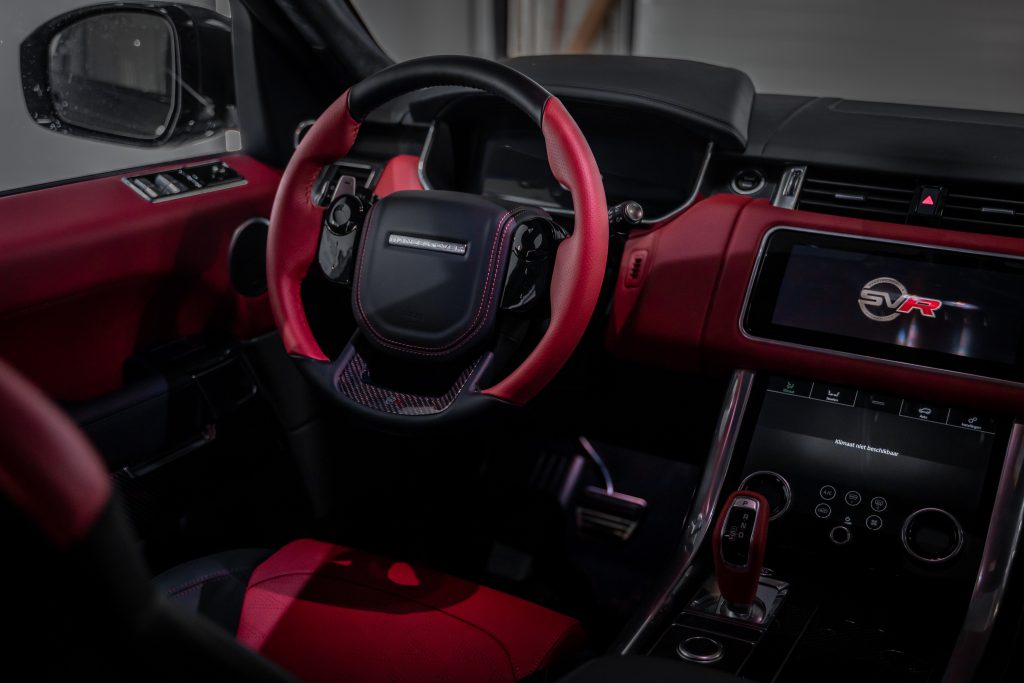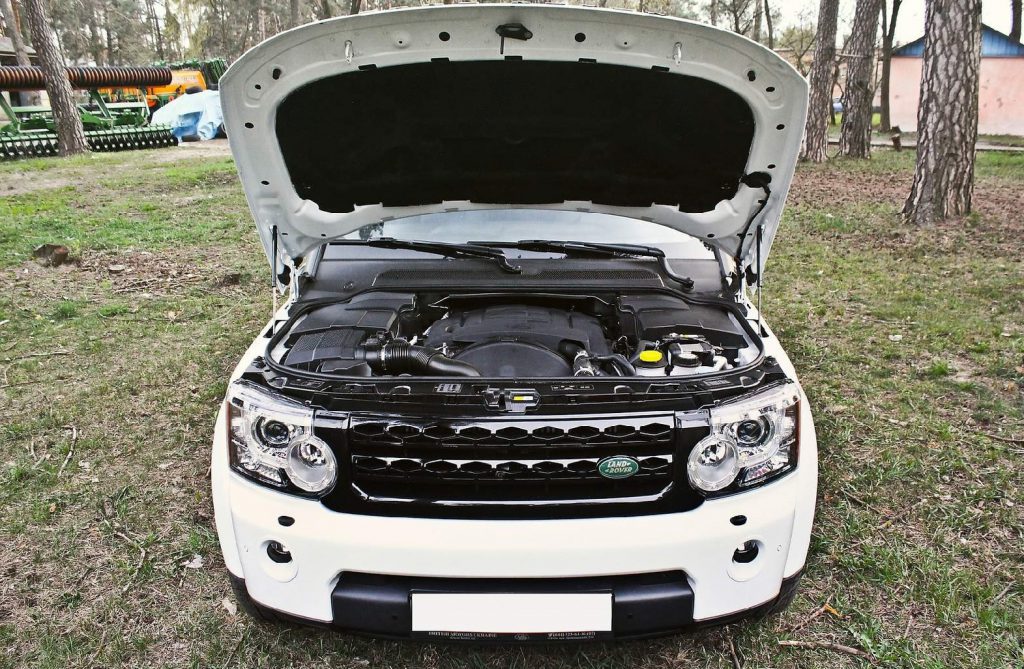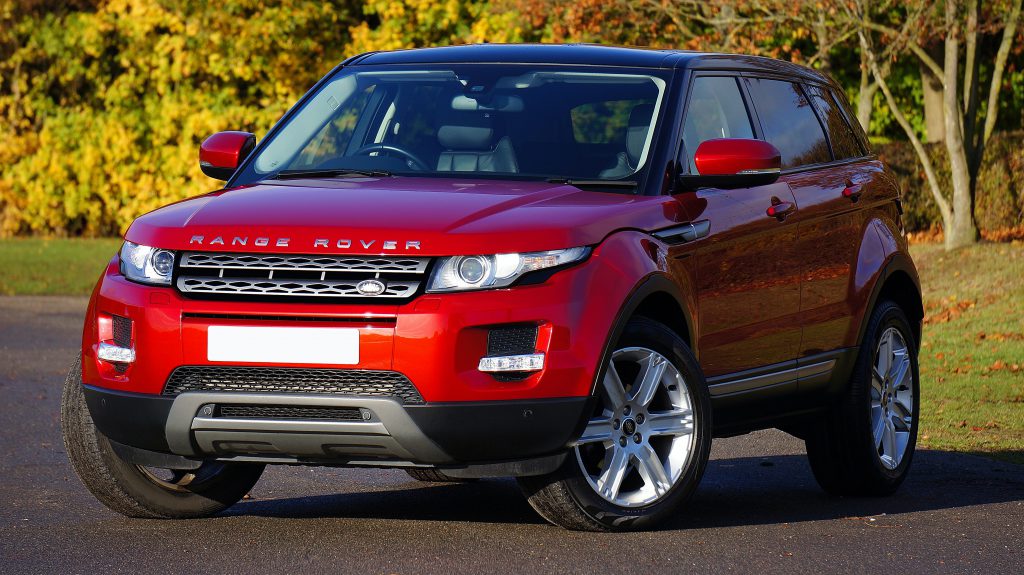Range Rover is a luxury sport utility vehicle (SUV) produced by the British car manufacturer Land Rover. The first Range Rover model was introduced in 1970, and since then, it has become a symbol of style, luxury, and off-road performance.
Generally, Range Rovers are known for their distinctive design, with a boxy shape and a split tailgate. They feature full-time four-wheel drive, air suspension, and a range of advanced technologies to enhance their off-road performance.
They are also known for their luxurious interiors, which feature high-quality materials, advanced infotainment systems, and a range of comfort and convenience features.
Over the years, Range Rover has introduced a range of models, including the Range Rover Sport and the Range Rover Evoque, each offering a unique blend of luxury and performance.
Range Rover offers several luxury features that provide a comfortable and enjoyable driving experience.
Here are some of them:
Premium Leather Upholstery: The Range Rover’s interior is adorned with premium leather upholstery that provides a luxurious feel to the cabin. The seats are highly adjustable and have multiple heating and cooling options to provide maximum comfort.
Panoramic Sunroof: It comes with a large panoramic sunroof that extends over the front and rear seats, allowing natural light to flood the cabin and providing an open-air driving experience.
Meridian Sound System: The Range Rover’s Meridian Sound System delivers crystal-clear audio quality with up to 1700 watts of power and 29 speakers strategically placed throughout the cabin.
Adaptive Cruise Control: This feature uses radar sensors to detect the distance between the Range Rover and the vehicle in front, adjusting the speed accordingly to maintain a safe distance while cruising on the highway.
Terrain Response System: The Range Rover’s terrain response system adjusts the suspension and engine response based on the type of terrain the vehicle is driving on, providing a smoother and more comfortable ride.

Multi-Zone Climate Control: This system allows passengers to individually adjust their temperature preferences, ensuring maximum comfort for everyone.
Rear-Seat Entertainment: The Range Rover comes with a rear-seat entertainment system that includes two 10-inch touchscreens mounted on the backs of the front seats, providing passengers with access to movies, games, and music.
Advanced Driver Assistance Systems: The advanced driver assistance systems include features such as lane departure warning, blind spot monitoring, and forward collision warning, helping to keep everyone in the car safe.
Gesture Control: The gesture control system allows drivers to perform certain actions, such as opening the sunroof or adjusting the audio volume, simply by waving their hand in front of a sensor.
Ambient Lighting: This system provides a warm and inviting atmosphere, with adjustable colors and brightness levels to suit the driver’s preference.
Off-Road Capabilities of the Range Rover
Range Rover has a long-standing reputation for its off-road capabilities. Here are some of the key features that make the Range Rover capable off-road:
Terrain Response System: This is a unique technology that allows the driver to select the appropriate driving mode for the terrain they are traversing. It adjusts various settings, such as the throttle response, transmission, and suspension, to optimise the vehicle’s performance on different surfaces.
All-Wheel Drive: All Range Rovers come with full-time four-wheel drive, which provides excellent traction and stability. The system continuously monitors the road surface and adjusts the torque distribution to the wheels to maintain optimal grip.
Air Suspension: Range Rovers are equipped with air suspension, which allows the driver to adjust the ride height to suit the terrain. The system can raise the vehicle for better ground clearance when driving off-road or lower it for improved handling on the road.
Hill Descent Control: This feature uses the vehicle’s brakes and traction control system to maintain a safe speed when descending steep slopes. The driver can control the speed of the descent with the brake pedal, while the system applies the brakes to individual wheels to maintain control.
Wade Sensing: This feature uses sensors in the side mirrors to monitor the water depth when driving through water. It displays the water depth on the vehicle’s infotainment screen, allowing the driver to make informed decisions about whether to proceed or not.
Locking Differentials: This provides maximum traction by locking the front and rear axles together. It is especially useful when driving on uneven terrain or when one or more wheels lose traction.
Maintenance, Service, and Repair
Procedures and requirements for maintaining, servicing, and repairing Range Rovers can vary depending on the year, model, driving habits, and location. Always refer to the owner’s manual and seek professional input when dealing with any maintenance or repair issues. It’s also advisable to get a car insurance for your Range Rover. However, the general information on Range Rover maintenance, service, and repairs is as follows:

Maintenance:
Regular maintenance is essential to keep your Range Rover running smoothly and prevent costly repairs. Here are some general guidelines for its maintenance:
Oil changes: Range Rovers typically require oil changes every 7,500 to 10,000 miles. Use the high-quality synthetic oil recommended by the manufacturer.
Fluids: Check and top up all fluid levels, including coolant, brake fluid, power steering fluid, and windscreen washer fluid, regularly.
Filters: Replace air filters, cabin filters, and fuel filters as recommended by the manufacturer.
Tyres: Check tyre pressure and tread depth regularly. Rotate the tyres every 10,000 to 12,000 miles.
Brakes: Check brake pads, rotors, and calipers regularly. Replace as needed.
Battery: Inspect the battery for signs of wear and tear. Replace the battery every four to six years.
Service:
Range Rovers require regular service at certain intervals to maintain their performance and longevity. Here are some common services:
15,000 miles: Inspect all systems and components, including brakes, suspension, steering, and drivetrain. Replace the engine oil and oil filter.
30,000 miles: Replace the air filter, cabin filter, and fuel filter. Inspect the timing belt and replace it as needed.
60,000 miles: Replace the spark plugs, coolant, and brake fluid.
90,000 miles: Inspect the drive belt, hoses, and coolant.
Repairs:
Range Rovers can experience problems that require repairs despite their durability and reliability. Here are some common repairs:
Suspension: Range Rovers are known for their air suspension system, which can experience leaks or failures. Repair or replacement of air suspension components can be costly.
Electrical: Range Rovers have complex electrical systems that can experience issues with sensors, modules, and wiring. Diagnosing and repairing electrical problems can be challenging.
Engine: The engine can experience issues with the timing belt, water pump, and oil leaks. Addressing these issues promptly can prevent more significant engine problems.
Transmission: Range Rover transmissions can experience problems with shifting, slipping, or leaking. Repair or replacement of transmission components can be expensive.
Range Rover and Competitors’ Comparison

Range Rover offers a unique blend of luxury features and off-road capabilities that sets it apart from its competitors. While other luxury SUVs may offer better fuel efficiency, the Range Rover’s reputation for durability and ruggedness make it a favourite among those who value adventure and exploration. However, specific preferences may vary, and it’s essential to test-drive and compare different vehicles before making a final decision.
Range Rover vs. BMW X7
The BMW X7 is a luxury SUV that competes with the Range Rover. Both vehicles offer a spacious and luxurious interior with advanced technology and features. Because of its four-wheel-drive system and air suspension, the Range Rover provides a more rugged and off-road capable experience. The BMW X7 offers better fuel efficiency and a smoother ride.
Range Rover vs. Mercedes-Benz G-Class
The Mercedes-Benz G-Class is also a rugged SUV that competes with the Range Rover. Both vehicles offer a high level of luxury and advanced technology, but the G-Class has a more utilitarian and boxy design, while the Range Rover offers a sleeker and more refined appearance. The Range Rover also offers a more comfortable ride, while the G-Class is also known for its off-road capabilities and durability.
Range Rover vs. Porsche Cayenne
The Porsche Cayenne is a sporty luxury SUV that can compete with the Range Rover. Both offer impressive performance and handling with advanced technology. However, the Range Rover offers more space and comfort with its roomy interior and advanced suspension system. The Porsche Cayenne, on the other hand, offers a more dynamic driving experience and slightly better fuel efficiency.
Range Rover vs. Lexus LX
The Lexus LX is another luxury SUV that competes with the Range Rover. Both vehicles offer a high level of luxury and technology, with advanced safety features and four-wheel-drive systems. However, the Range Rover offers more off-road capabilities and a more refined and luxurious interior. The Lexus LX, on the other hand, offers a smoother and quieter ride with better fuel efficiency.
In conclusion, Range Rover is a luxurious, rugged, technologically advanced, and off-road capable SUV known for its durability and refinement. Range Rovers are built to tackle challenging off-road terrain while providing the luxurious ride and comfort.
Whether you’re crossing a rocky mountain or forging through a river, a Range Rover is designed to get you there safely and in style. However, regular maintenance, timely servicing, and prompt repairs are crucial to keep your Range Rover running at its best.


